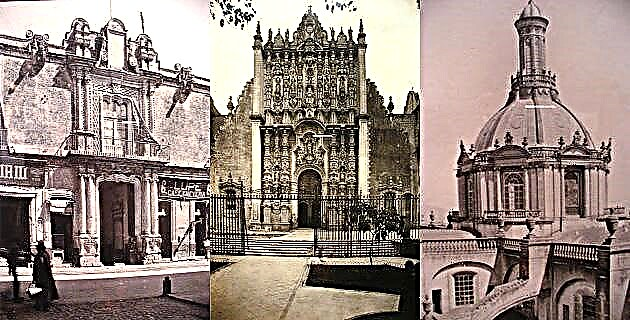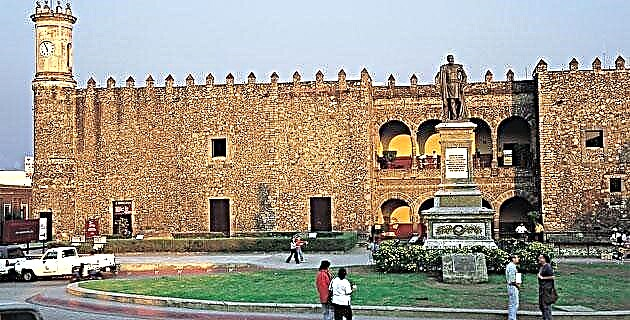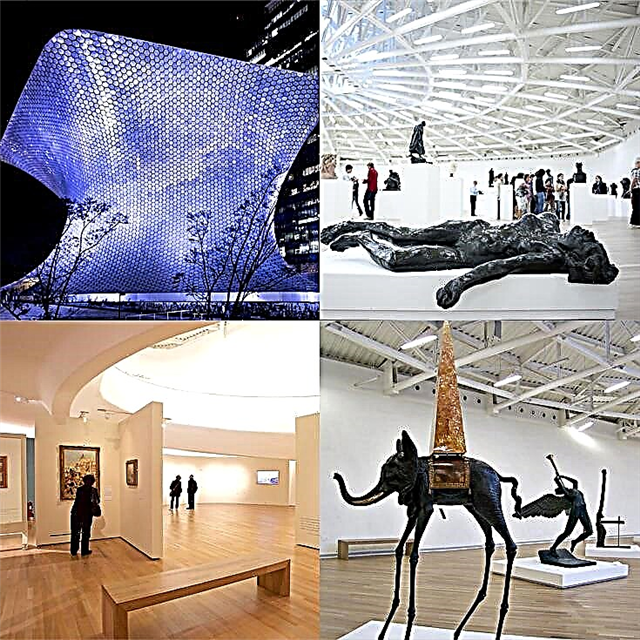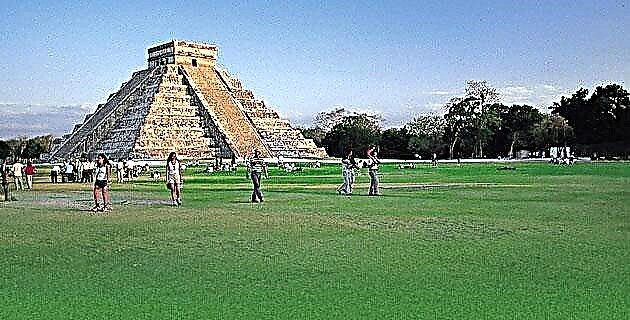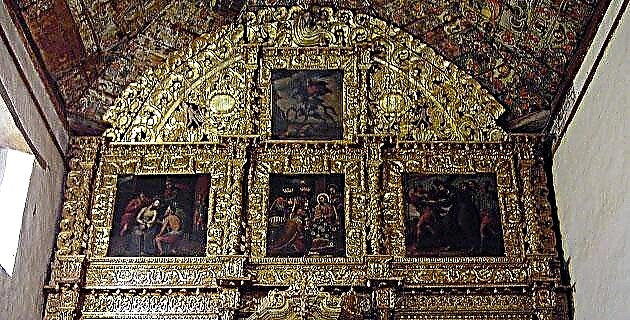
The passage of time, which transforms materials and ages them as part of the irreversible processes of nature, has produced serious and regrettable damage to the coffered ceiling, loss of wood, color changes, and some erased or drained images. It is no longer the work that it was originally; acquired its own identity, where the history of time was captured.
The temple of Santiago de Tupátaro, Michoacán, is of great historical and aesthetic importance because it contains one of the few coffered ceilings from the 17th century that we can still admire in Mexico and that are characteristic of the colonial architecture of Michoacán.
By data from Joaquín García Icazbalceta it is known that in the 16th century Curínguaro and Tupátaro were dependencies catechized by the Augustinian missionaries of Tiripetío, and towards this same date there is a record of the existence of a chapel. However, apparently it has nothing to do with the current temple of Santiago, since its construction dates from 1725.
The feeling that Tupátaro caused me, the first time I saw him, was one of forgetfulness, of abandonment, that time had left its mark on the paintings. On that occasion, I sat for more than two hours in the temple, looking at the coffered ceiling and trying to understand how it was built. I was wondering how far the restoration work that was about to start should go. The impression of loneliness and time stopped was the main factor that influenced the decision of how things were going to turn out; the large missing parts, the interruptions in the images, the taste and texture of the wood, the aged paint, created an atmosphere that was important to respect as fully as possible in order to achieve, with the restoration, a more fluid reading of what that at that time was seen.
It is generally thought that after a restorative intervention, the image should look almost complete and as it was originally painted, forcing restorers to perform what could be called an exercise in dexterity to interpret what little remains. Indeed, it is possible that Tupátaro could have intervened more; However, it would have been necessary to invent some parts, based on the original elements that remained of the painting, thereby erasing the traces of time, an important element of the nobility of things and their history. To reach the final decision to intervene in a measured and respectful way, it was necessary to hold long discussions with the community, with the board of trustees that provided the financial resources, and even with the restaurateurs themselves, and carry out tests that exemplify the result of the intervention. This was the great challenge.
When the work began and as it progressed, it was possible to observe the painting closely and discover hidden details, interesting from a technical and plastic point of view, that spoke of the artist at work: not a cultured artist, but someone with training in technique, and above all with a great taste for things. In his work, he captured what could be considered as the passage from pain to joy, because despite the fact that the series of images are represented with a great spiritual load and pain, through coloring the author gives them a different dimension.
In colonial art, especially academic, shades of gray, dark, almagres, brown or cuttlefish, are consistent with the theme of religious painting. However, in Tupátaro, the splendid combination of reds, greens, blacks, ocher and whites, with a naive but very rich shape and within an evidently baroque style (full of curves and sensuality, which does not admit of unpainted space), allowed to the artist an extraordinary plastic manifestation. In this way, when one is in front of the coffered ceiling of Tupátaro, despite being images with a religious sense and representative of a great act of faith, one can admire a song to life, happiness and joy.
At the beginning of the restoration, the members of the community - with the usual jealousy and devotion for their things and, above all, with the demand that they be respected - were suspicious of the recently denied people of the city. But as time progressed, it was possible that the group of restorers and the community got involved in the different works of the altarpiece and the painting of the coffered ceiling, which made the population reflect on what they had in their custody: to recognize the great value and historical importance of this work that by tradition had mainly a religious sense, awakening in people admiration, appreciation and pride for this colonial jewel.
This pride, reflected in the different faces like in a mirror, was manifested in the great popular festival -as we were able to verify in the delivery of the works-, in which, with an unusual joy, the communities of Tupátaro and Cuanajo, the bands, women with their embroidered aprons in different colors, girls with flower petals.
The people of Tupátaro, who three days before had prepared, cleaning and beautifying their town, had become aware of what their history, heritage, and the value of their church have, which is the most important part and significant of any work: recover the dignity of a population. It should be added that these works provide all of us who participate with great satisfaction and pride, for the pride of the population, for the work done on their heritage and for the privilege of being able to enjoy this history of our country.
The recovery of the painting, the altarpiece, the square and the atrium of the church, where the community collaborated in an extraordinary way, has given a worthy framework to the project and the population, which since that day is different, because has regained the confidence that from these works (in which the federal, state and municipal governments, the population and the Board of "Adopt a Work of Art" in Michoacán, restorers and architects participated), it will be possible to integrate a larger project that allows the economic development of the population, with an adequate and conscious management of the resources that does not distort the essence of what Tupátaro is. In the future, this will have to be the trend of conservation in Mexico: restoring not only the works belonging to the vast cultural heritage, but also trying to ensure that the communities and inhabitants in general regain dignity, hope and faith in a better future. .


